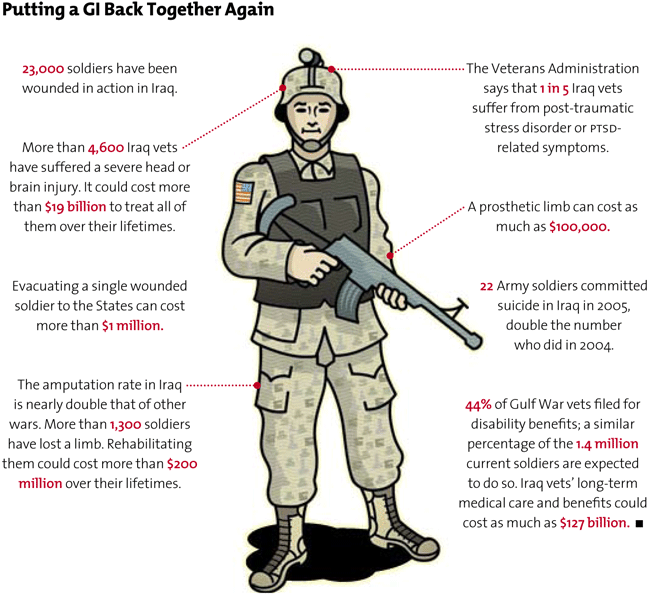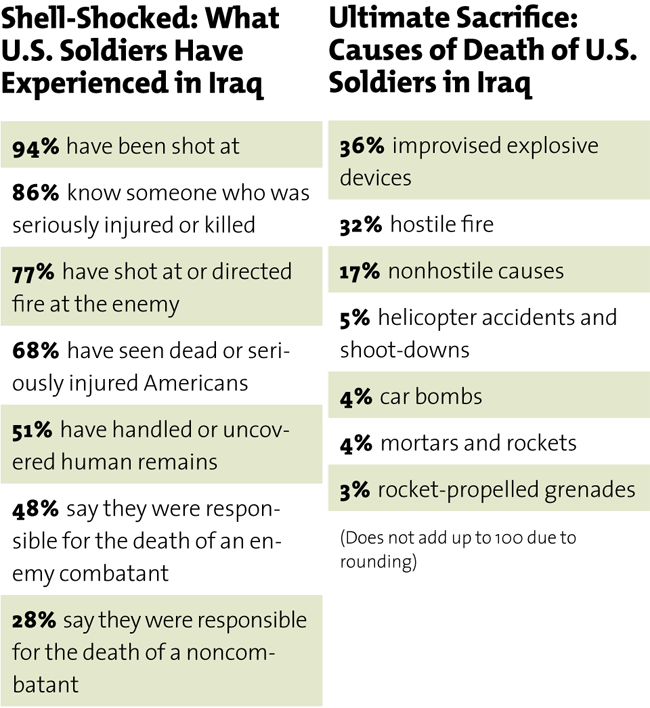
|
Breaking Half of American |
…and
the National Guard and Reserves
The Pentagon
has ordered the National Guard to transfer $1.76 billion worth of equipment
to the Army. Transferring gear overseas has left domestic Guard units
with 1/3 of their essential combat equipment. 7,040 Army National Guard
soldiers were deployed to Vietnam; 126 died. More than 100,000 have served
in Iraq so far; 392 have died. Deploying reservists in Iraq costs the
U.S. economy almost $4 billion in lost productivity annually.
The
Home Front
The death
rate for soldiers from rural areas is 60% higher than that for soldiers
from cities. Between 2003 and 2005, Army divorces increased by 14%. The
Miles Foundation reports that calls to its domestic violence hot line
for military spouses jumped from 50 to 600 per month after the start of
the Iraq War. In 2004, 1 out of 5 military spouses said they had signed
up for government assistance to make ends meet. The wife of a New York
National Guardsman deployed to Iraq applied for food stamps while raising
three kids on $19,000 a year. “His monthly military salary does not cover
one monthly mortgage payment.”
















